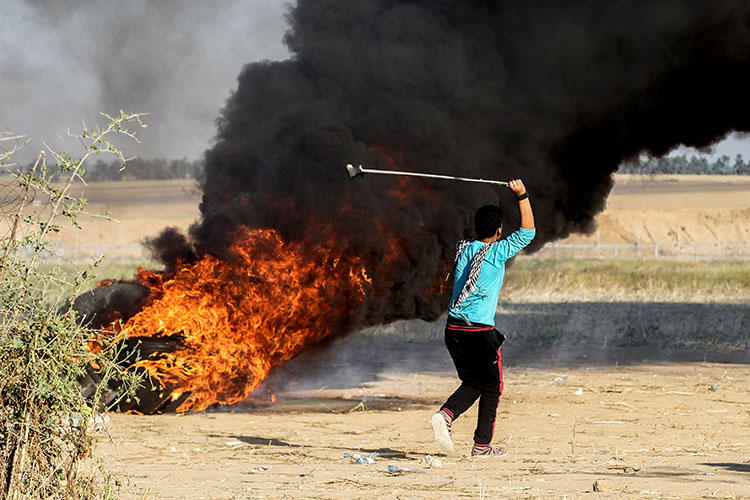Unrest continues in the Gaza Strip as Palestinians take part in weekly protests along the Gaza-Israel border. Violence has erupted repeatedly and the Israel Defense Forces (IDF) has fired on demonstrators and used tear gas and rubber bullets during clashes, according to news reports and the IDF. More than a dozen journalists covering the protests have been injured, including by live rounds, and one was killed, according to reports. CPJ’s Emergencies Response Team (ERT) has issued the following advisory for journalists planning to cover the demonstrations.
If covering the protests from either side of the Gaza-Israel border fence, please heed the following advice.
General advice:
- Ensure that you have appropriate insurance if you are able to buy coverage.
- Plan from where you will cover the protests and if possible recce the location. Work out what you would do in an emergency. There are ambulances and medical stations on standby, so position yourself within easy reach.
- Ensure that you have a full battery on your mobile phone. It is also sensible to have a satellite phone.
- Always try to work with a colleague and have a regular check-in procedure with your base.
- Work out how you would fall back to a safe location and plan any rendezvous locations in advance.
- Wear clothing and footwear that allows you to move swiftly. It is sensible to have body armor/helmet at hand in case of live fire. Identify yourself as a member of the press.
- Bear in mind that a shoulder cameras or even handheld devices can be confused for weapons from a distance. Consider putting high visibility tape on any device to reduce risk of targeting.
Tear gas and tire fire inhalation:
- Wear personal protective equipment which includes gas masks, eye protection.
- Authorities have used tear gas profusely and there is the possibility of high concentrations of tear gas sitting in areas with no movement of air. Individuals with asthma or respiratory issues should avoid areas where tear gas is being used. Contact lenses are not advisable.
- If you are exposed to tear gas, try to find higher ground and stand in fresh air to allow the breeze to carry away the gas. Do not rub your eyes or face as this may worsen the situation. Once possible, shower in cold water to wash the gas away from skin, but do not bathe. Clothing may need to be washed several times to rid the crystals completely or even be discarded.
- Tire fires produce a great deal of chemicals and no respirator filter will be able to remove all of them. A respirator with an ABEK P3 filter is best. Remain upwind of the fire where possible and change position to a safer location if wind direction changes.
If you are injured or require assistance you can contact CPJ by emailing report_violation@cpj.org.
CPJ encourages local, freelance journalists and media organizations covering the protests in the Gaza Strip to closely follow the safety principles and practices of the ACOS alliance, which can be found here.
For more information on basic preparedness, assessing and responding to risk, or safety measures when covering civil conflict and disturbances, we encourage journalists to review CPJ’s Journalist Security Guide. For details on resources available to journalists, please see CPJ’s Resource Center.
